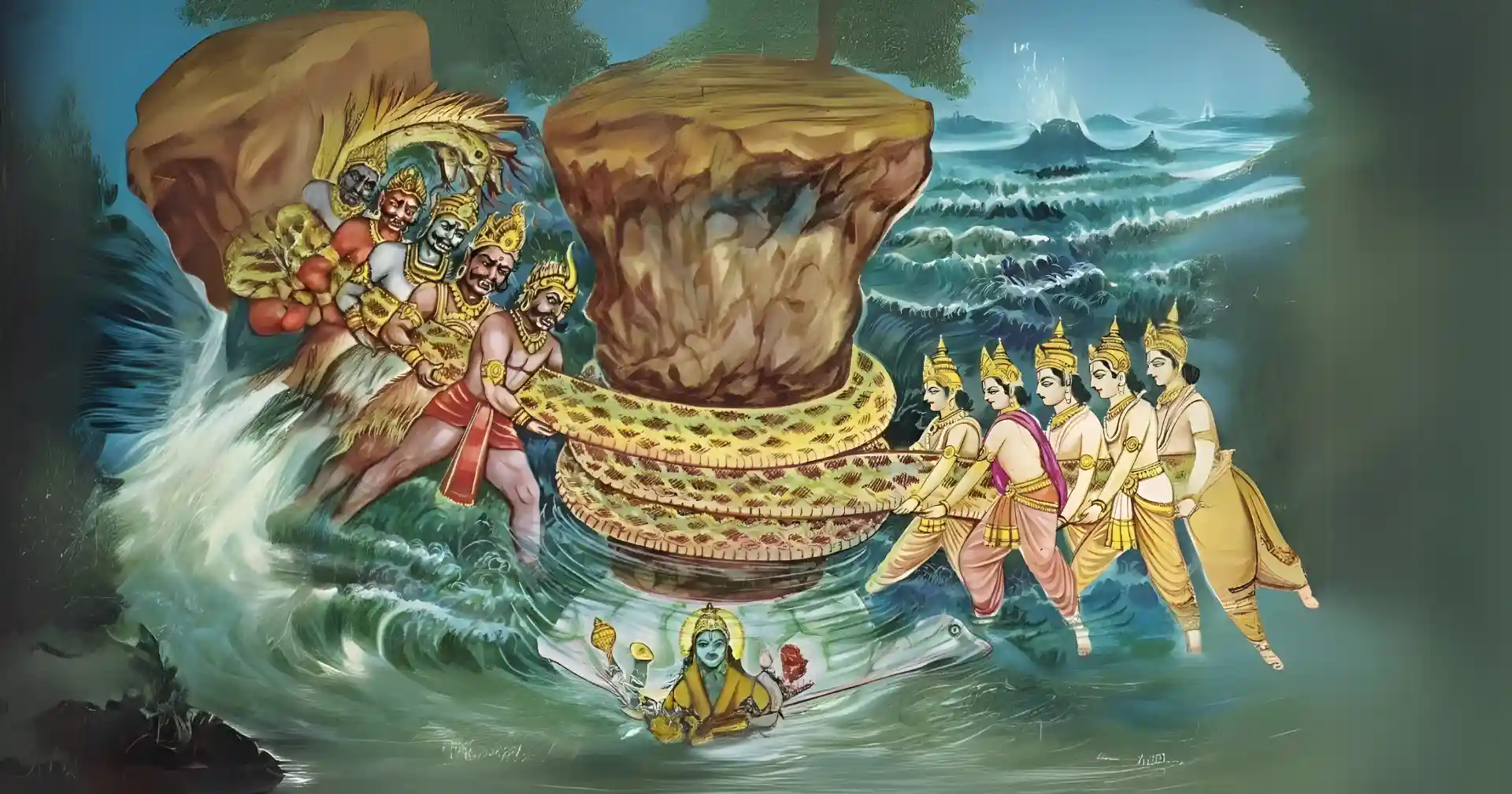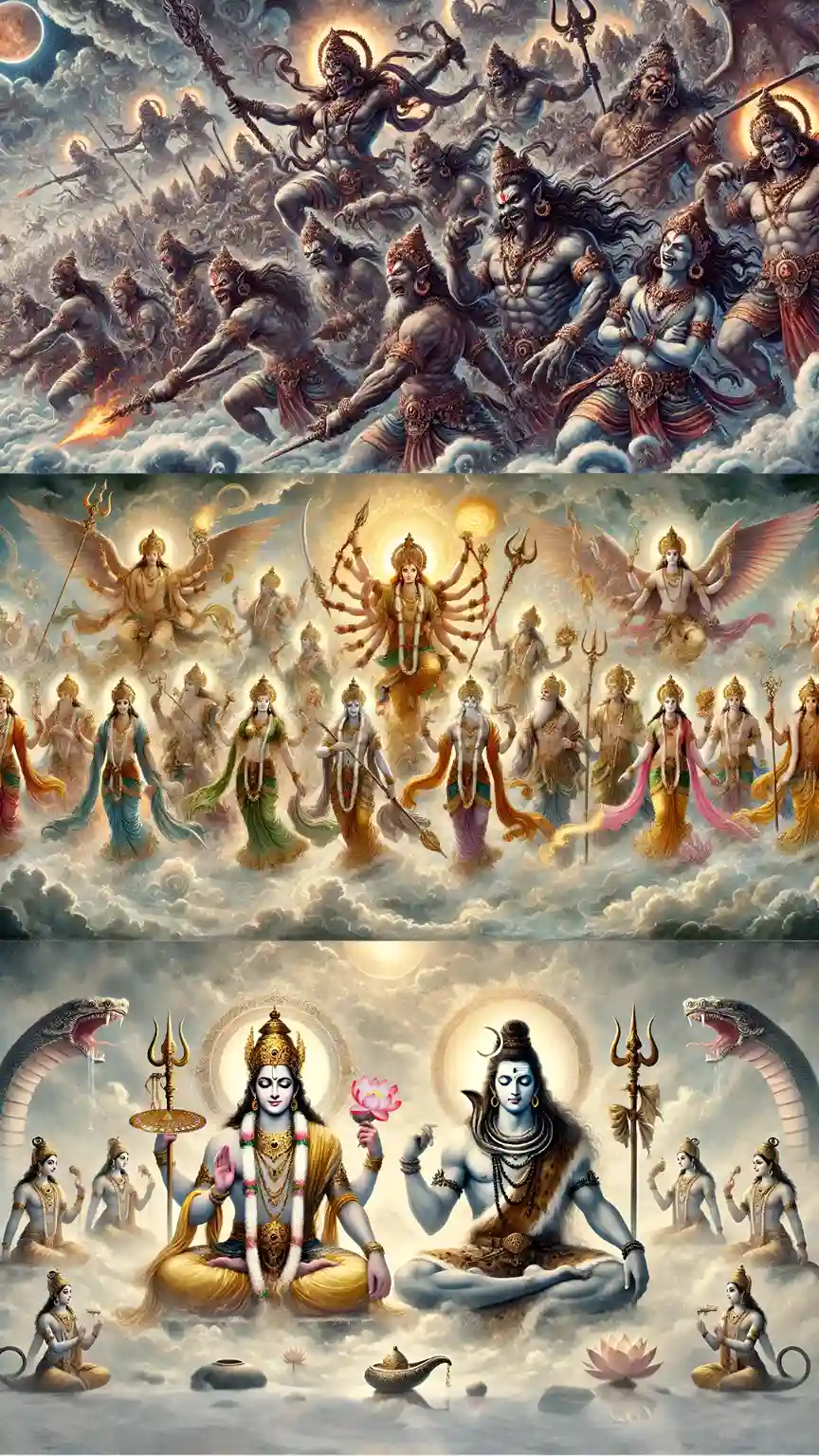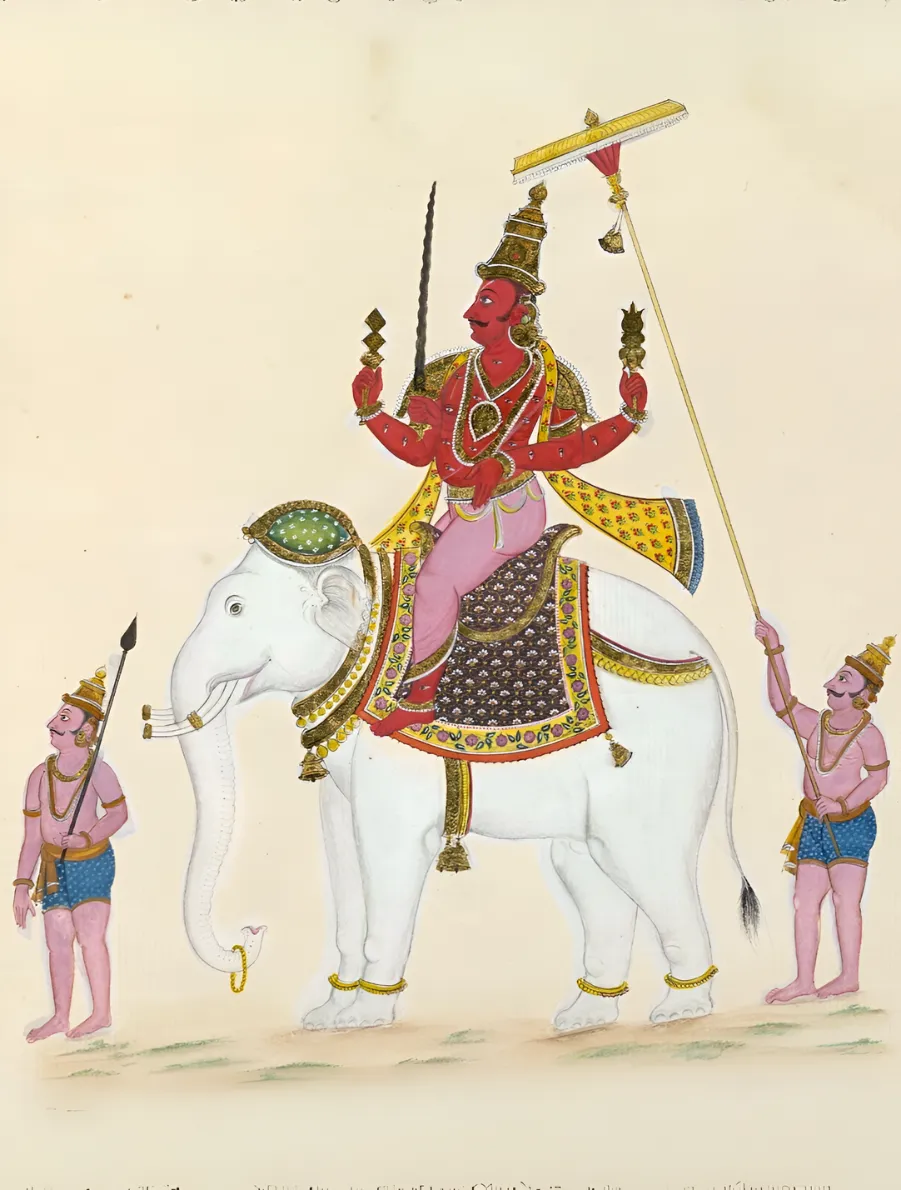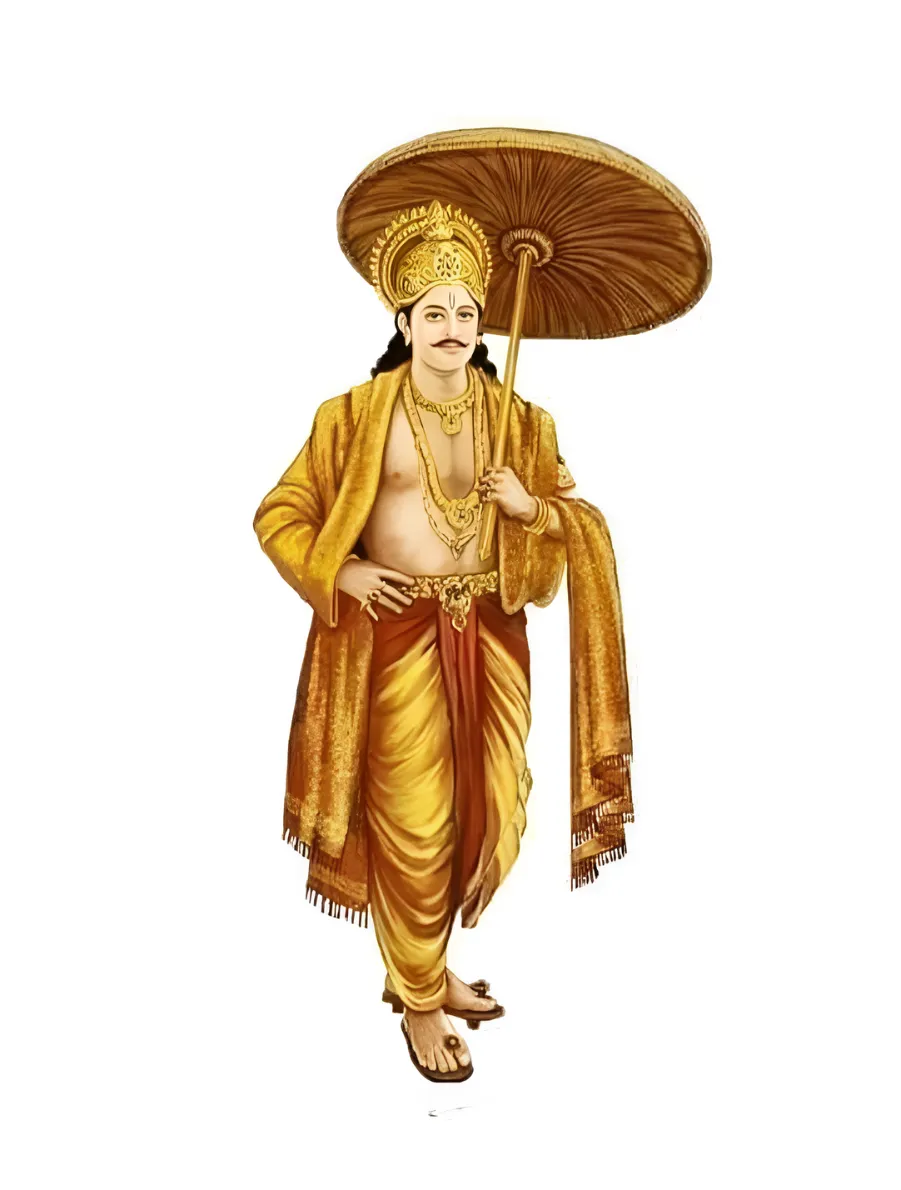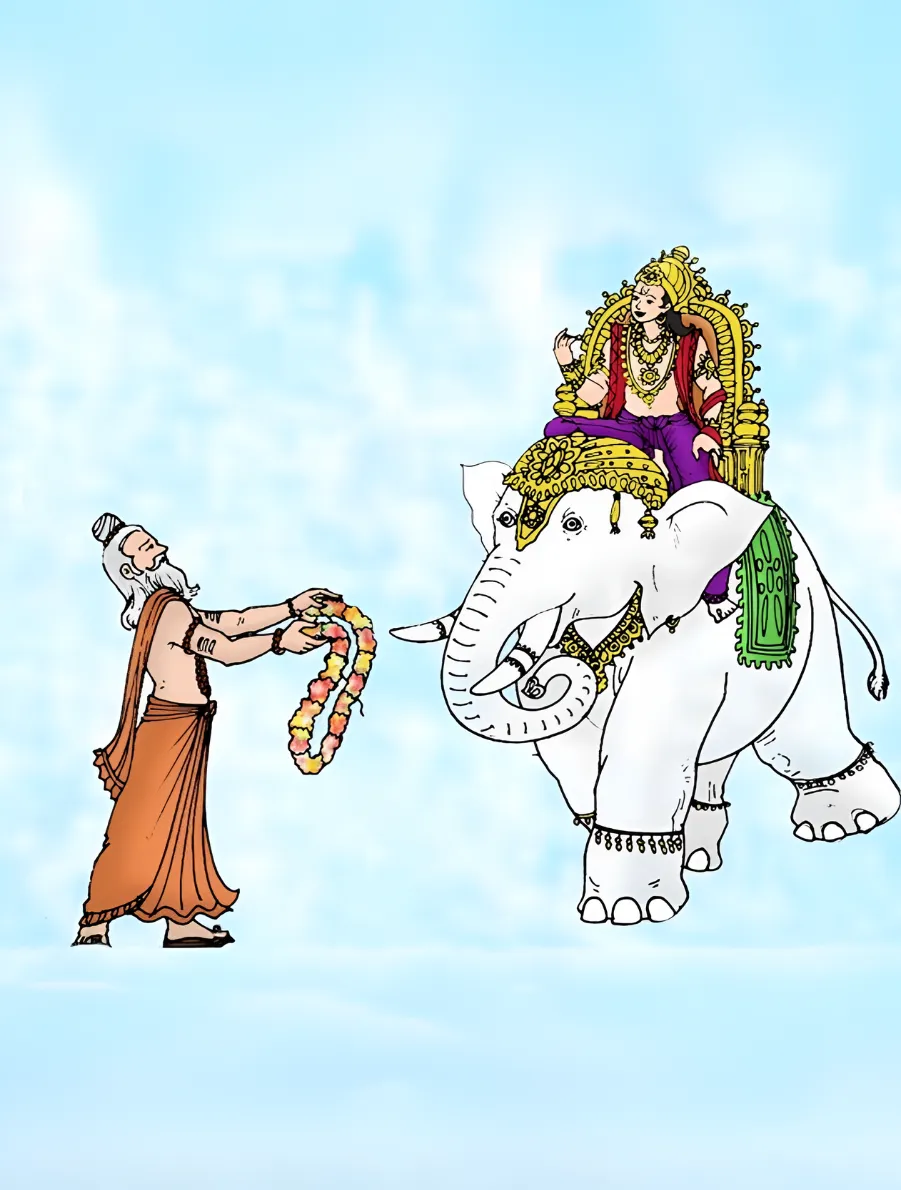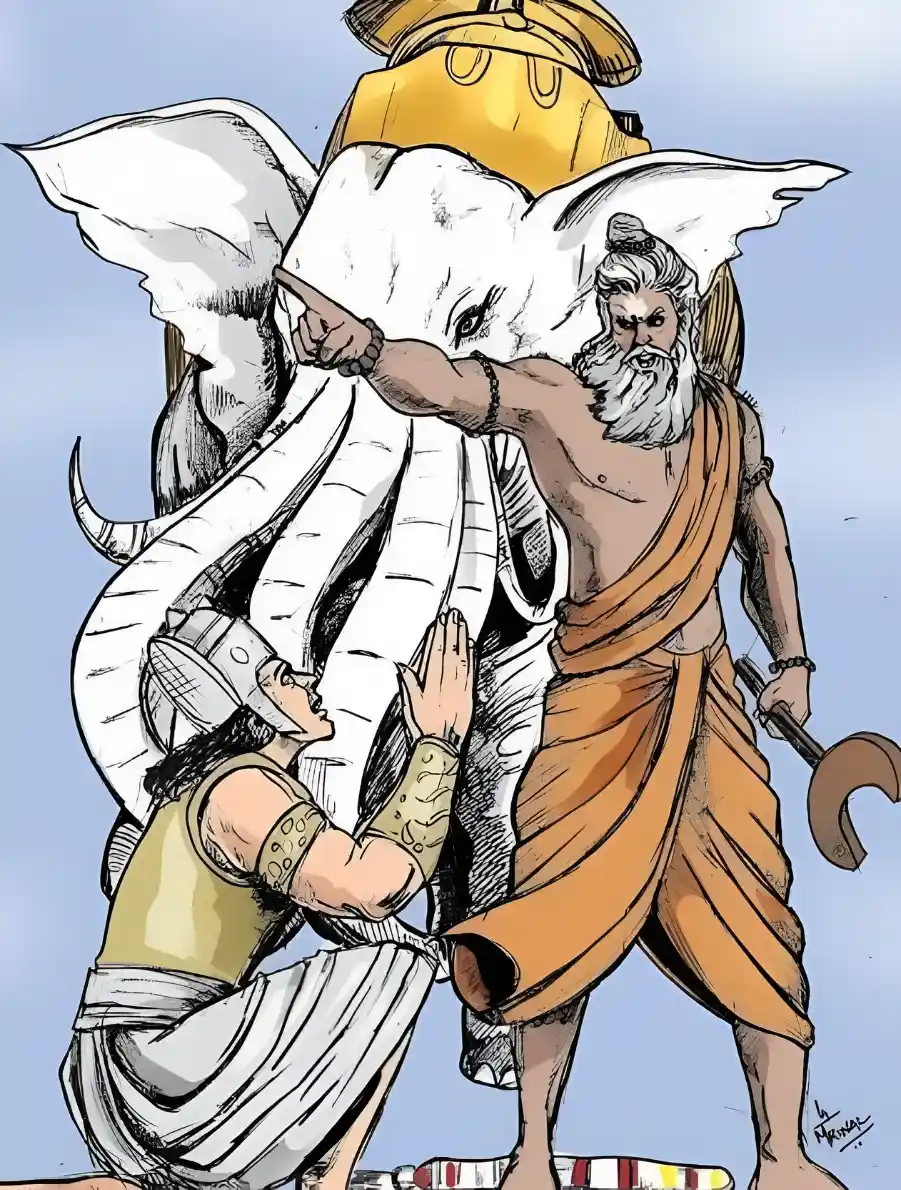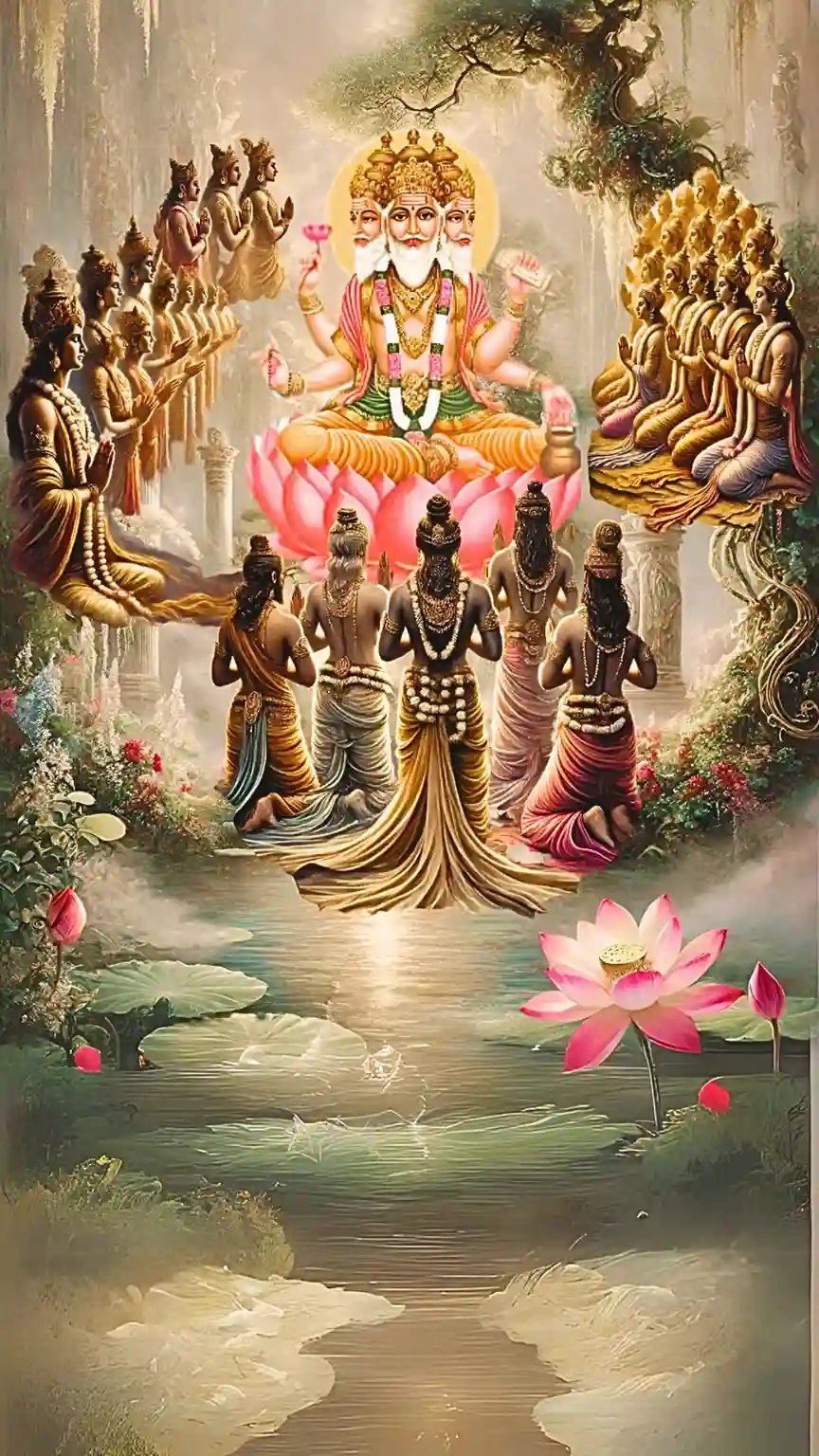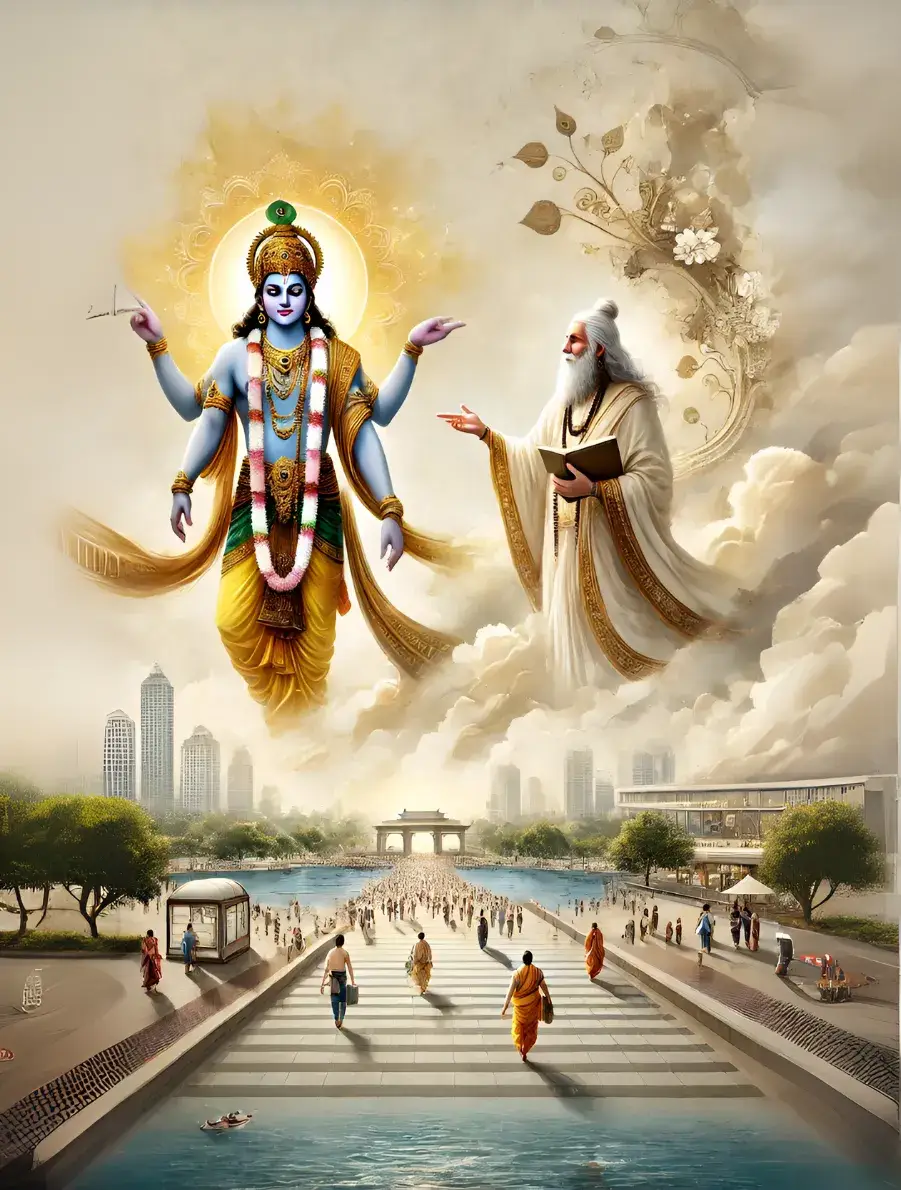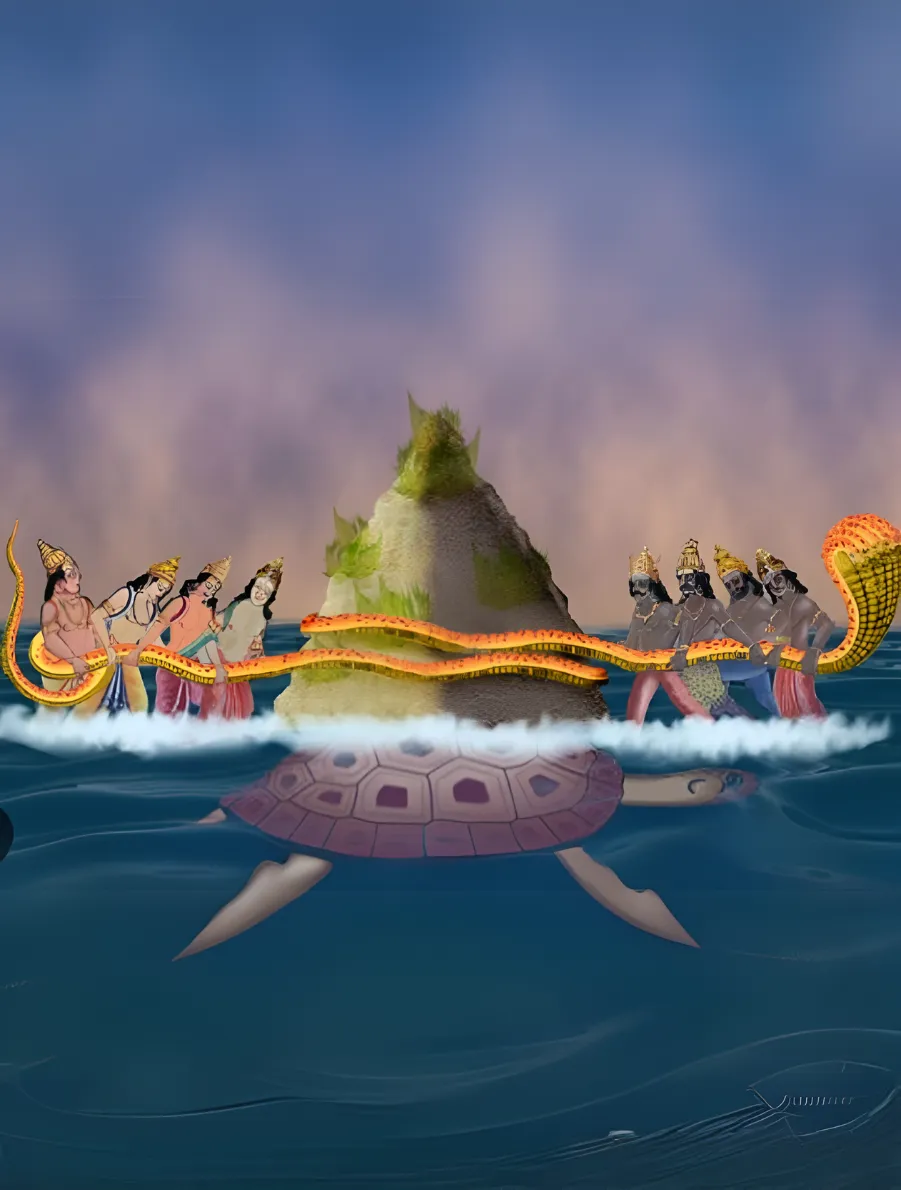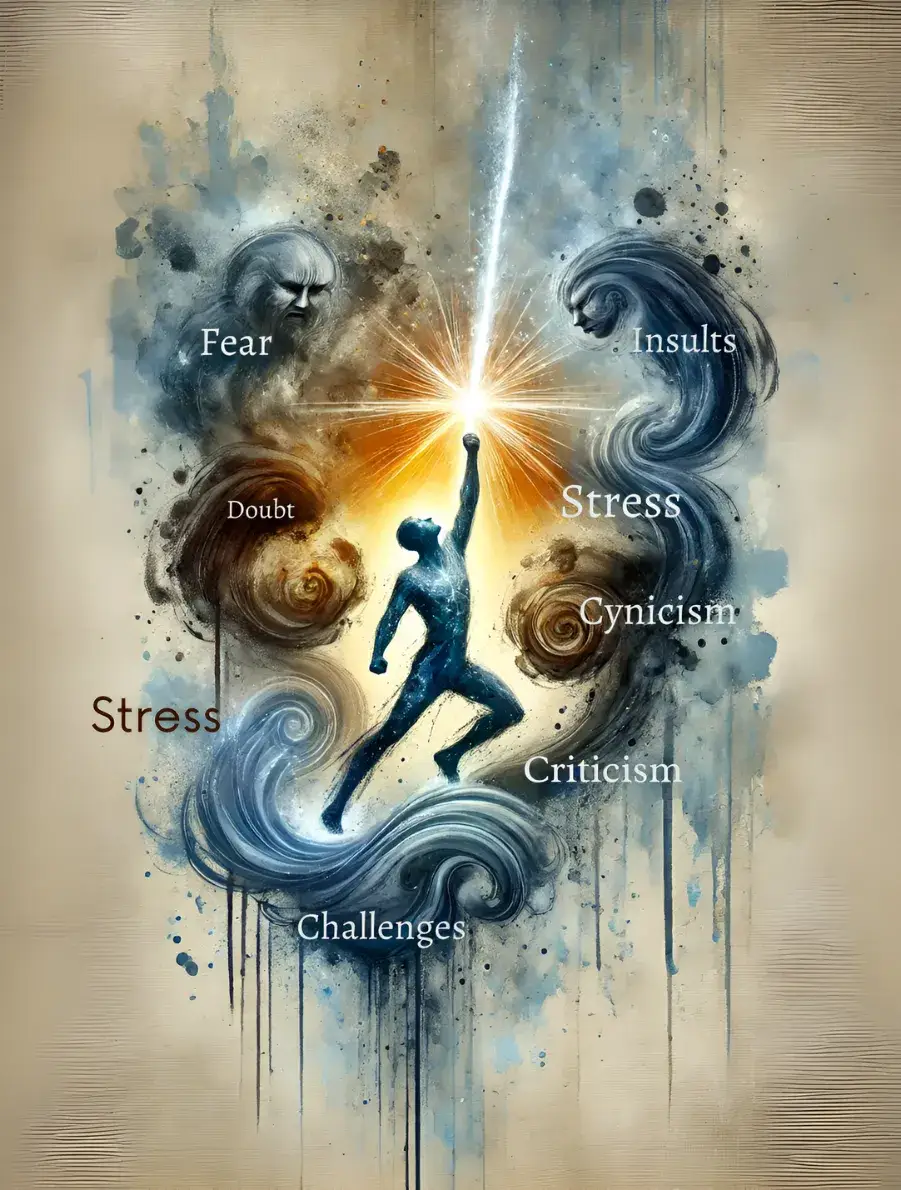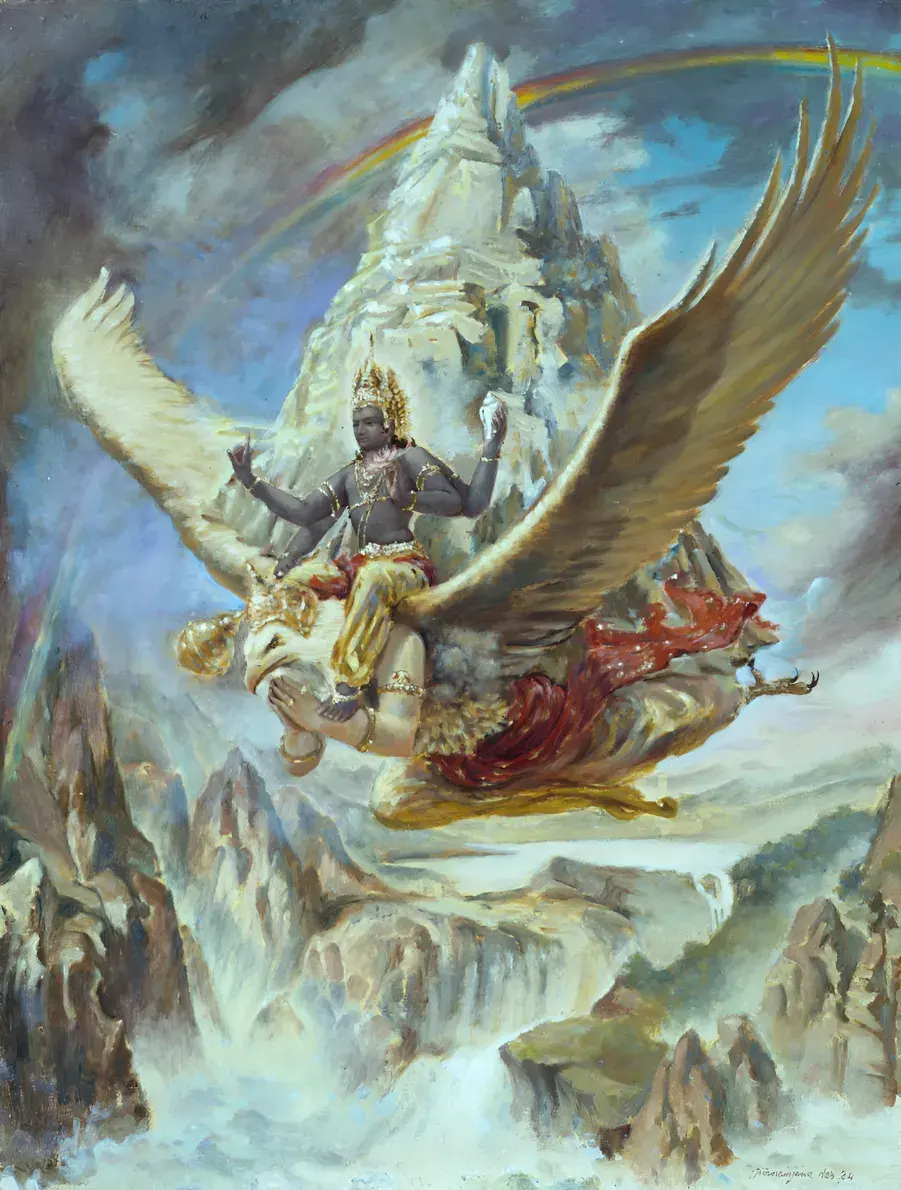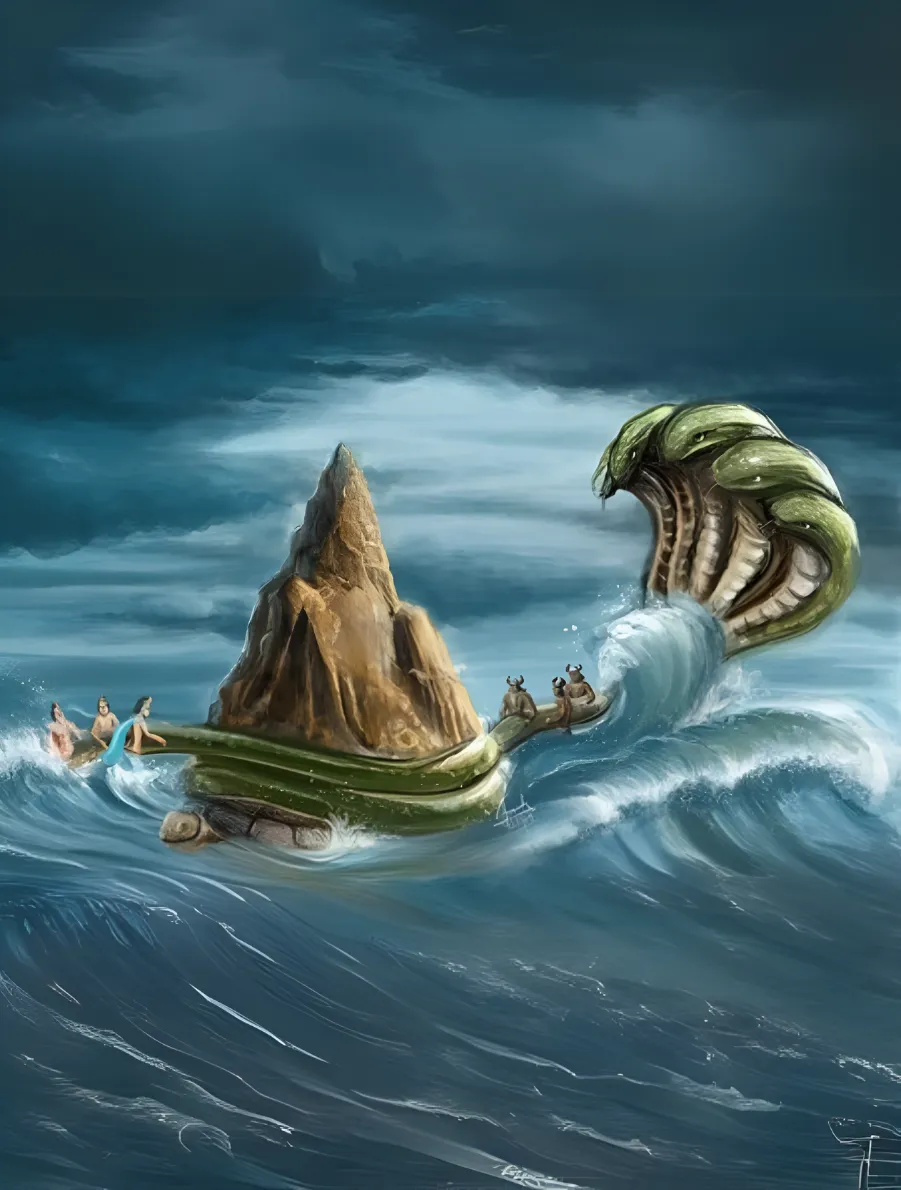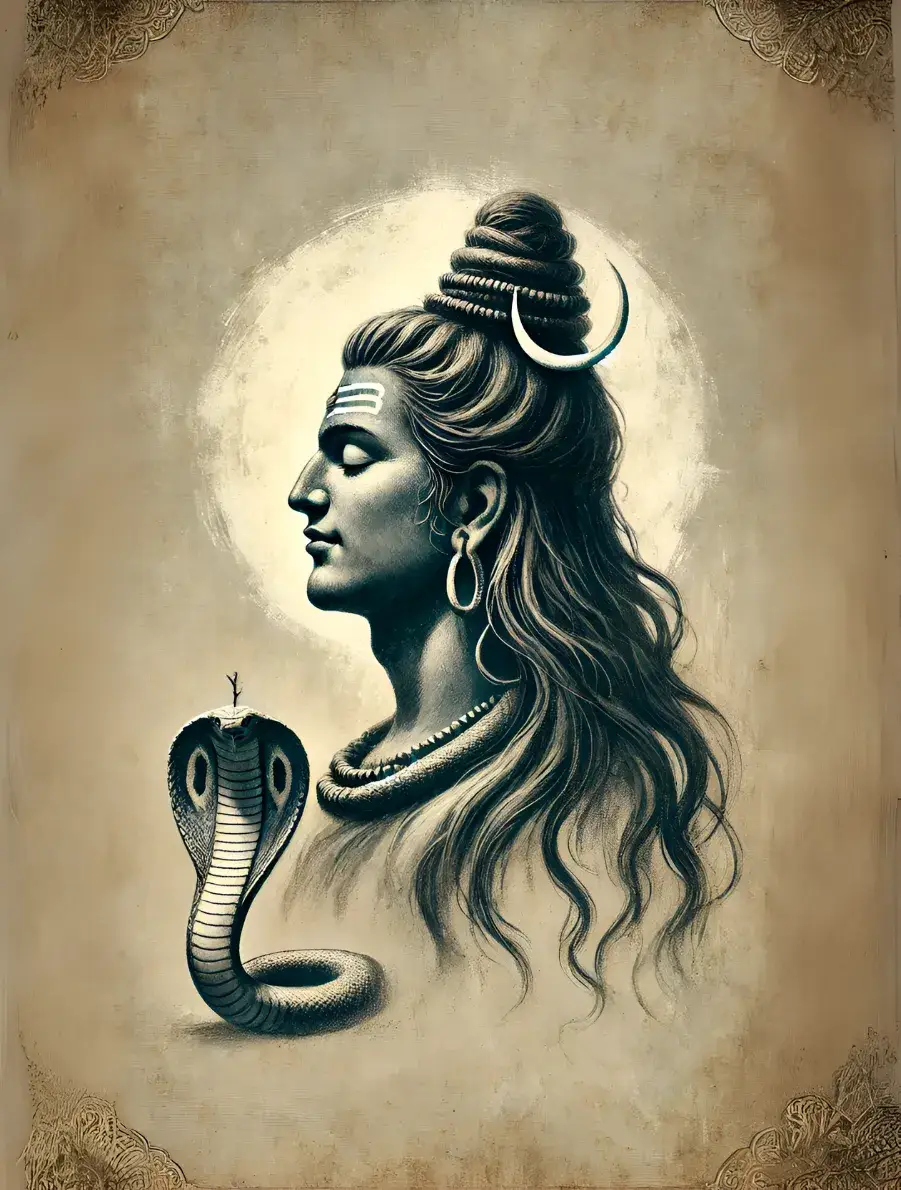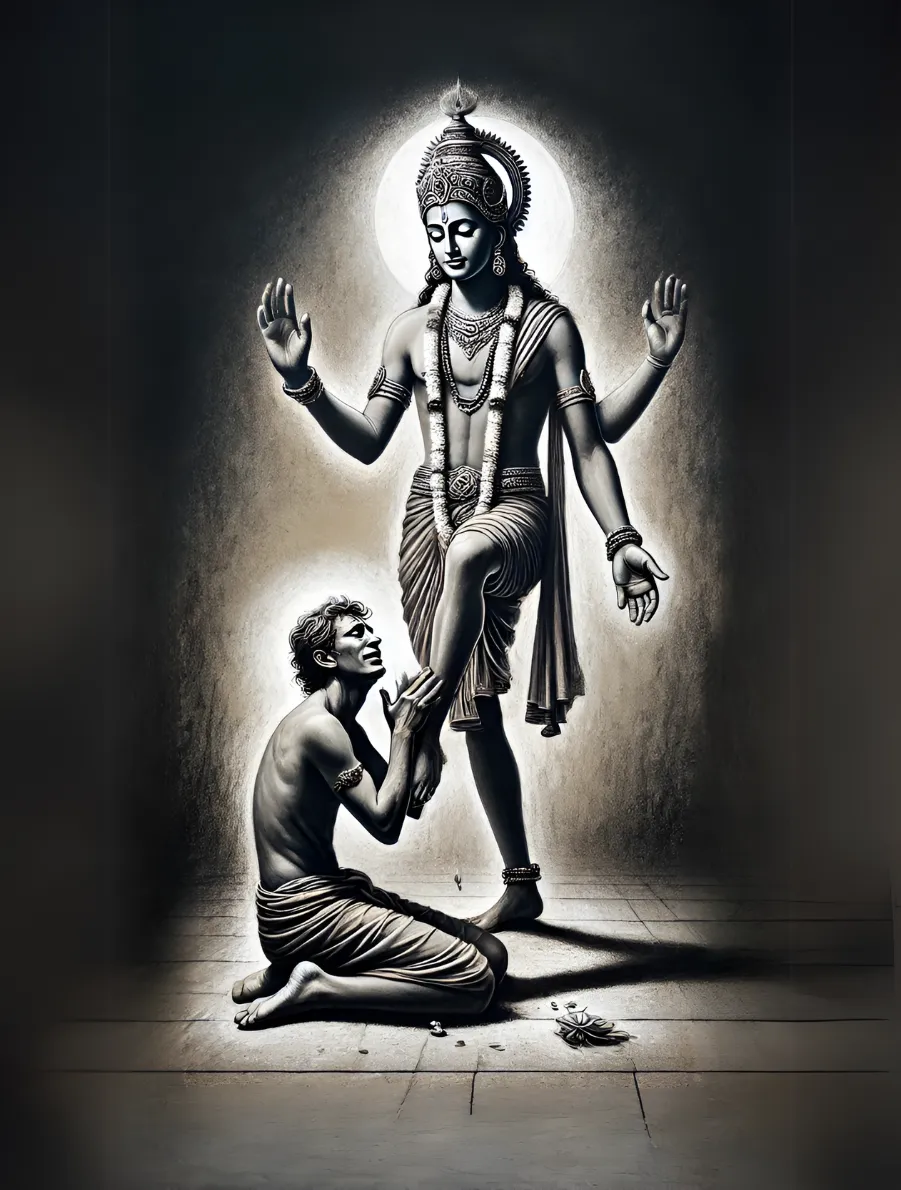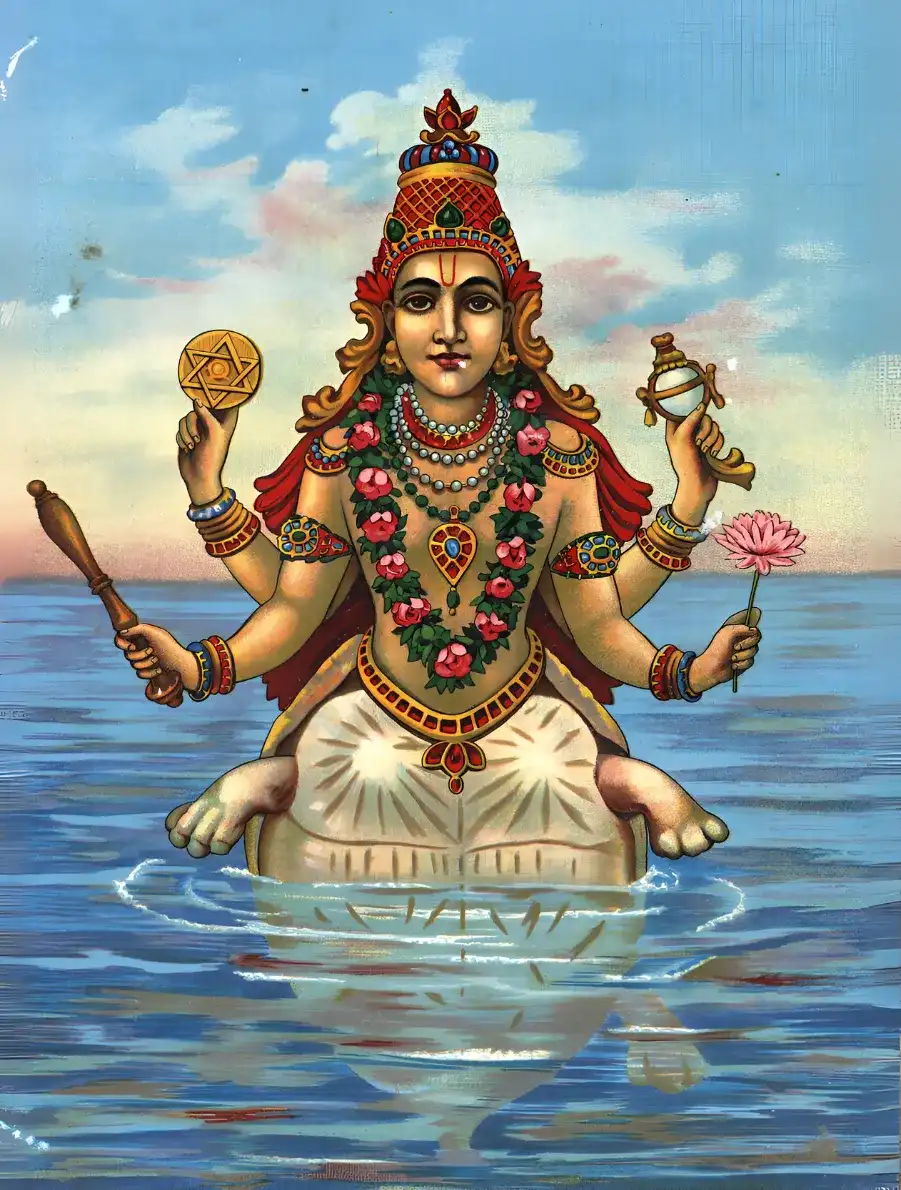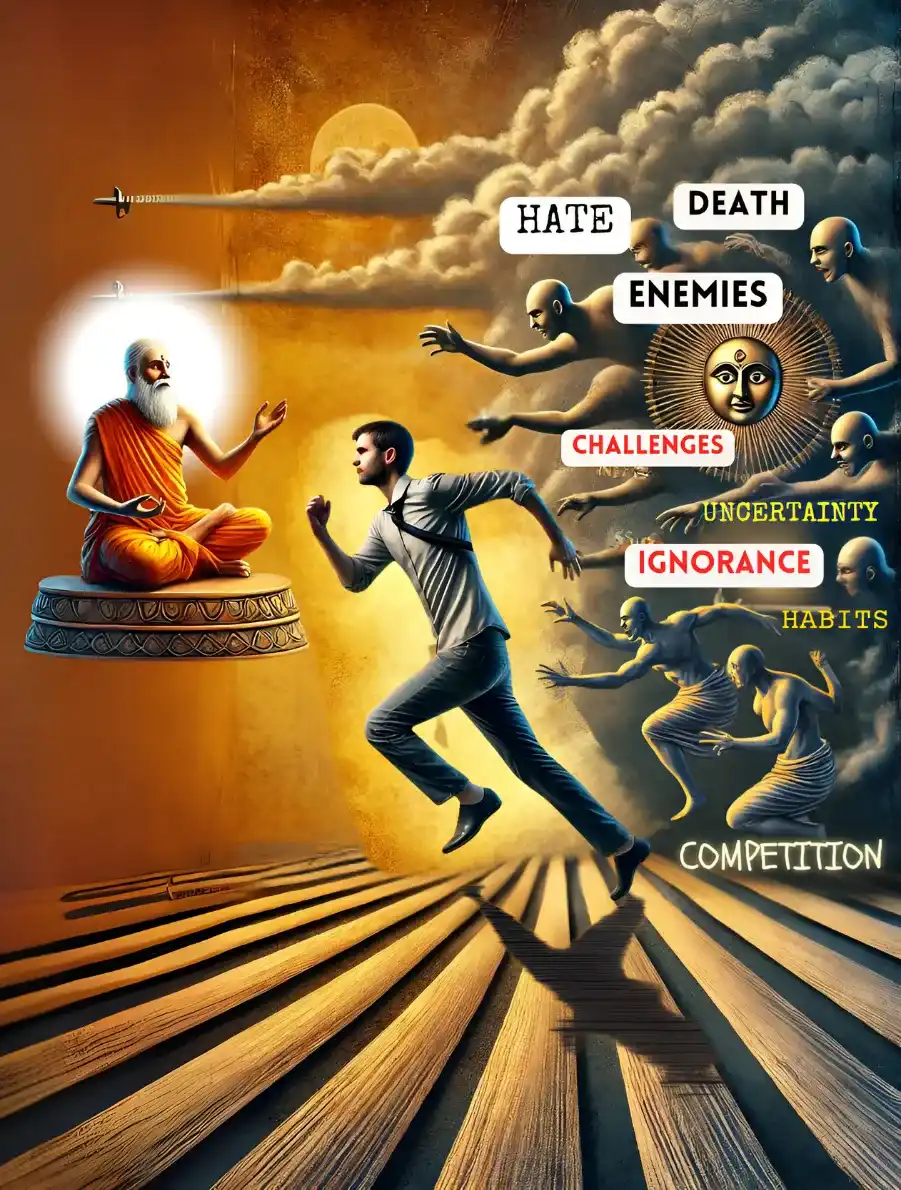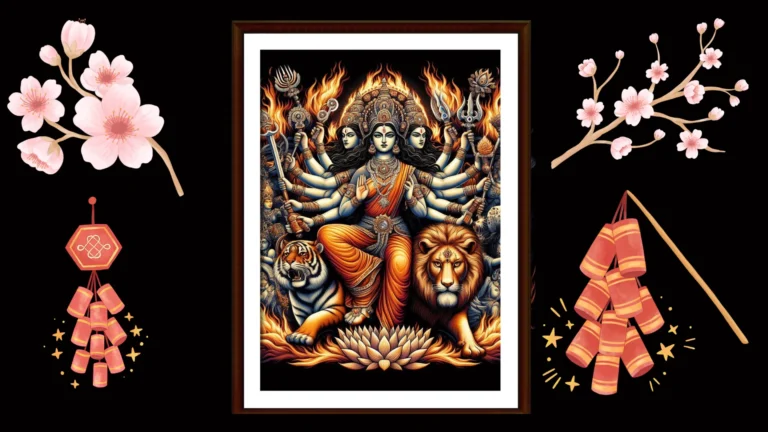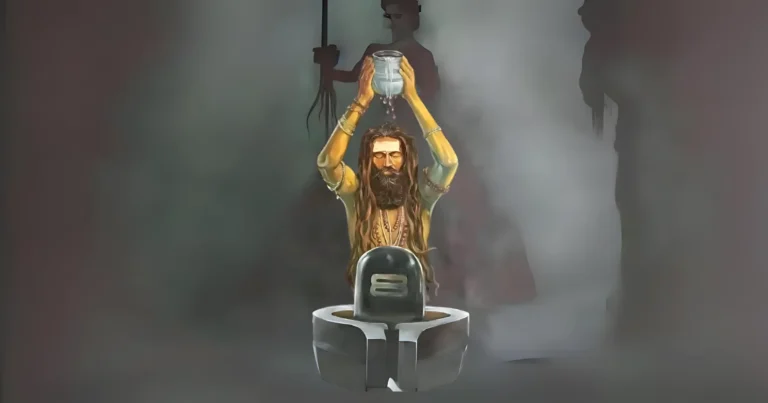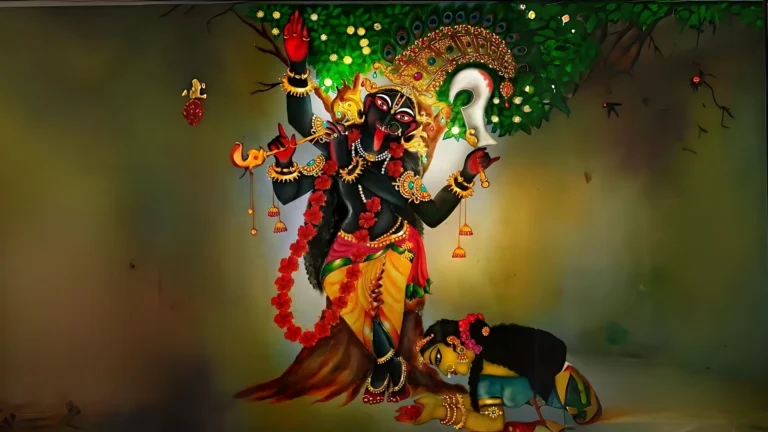Please Like the Blog and Share it for Maximum Reach
Table of Contents
Divine Teachings of Samudra Manthan
- Ego Leads to Downfall (Indra’s Arrogance & Curse)
- Indra’s pride caused the loss of Swarga and the downfall of the Devatas, showing that ego blinds intelligence and invites suffering.
- Adversity Awakens Spiritual Seeking
- The Devatas turned to Bhagawan only when calamity struck, teaching that suffering pushes a sadhaka towards divine guidance.
- The Guru is the First Step (Sri Brahma’s Role)
- Sri Brahma acted as the Guru, leading the Devatas to Lord Narayana, illustrating the indispensable role of a Guru in spiritual progress.
- Willpower & Determination are Essential (Mandara Mountain)
- The heavy Mandara Mountain represents a sadhaka’s determination, which must be unwavering to overcome obstacles on the path of truth.
- Faith & Surrender are Key (Vasuki’s Sacrifice)
- Vasuki endured suffering and still served selflessly, symbolizing that true surrender to Bhagawan attracts divine grace.
- Divine Intervention Supports the Sincere Seeker
- When the Devatas struggled, Sriman Narayana effortlessly lifted Mandara and upheld the process, proving that Bhagawan always supports true seekers.
- Poison Precedes Nectar (Lord Shiva & Kalakuta)
- Before Amrita emerged, the poison Kalakuta surfaced, teaching that purification requires enduring hardships before receiving divine blessings.
- Balance of Guna (Devas & Asuras Together)
- Both Devatas and Asuras were needed for the churning, symbolizing that a sadhaka must transcend both ‘good’ and ‘bad’ to attain divine realization.
- Moksha is the Ultimate Goal (Amrita & Liberation)
- The nectar of immortality signifies Moksha, teaching that true immortality is liberation from material bondage and merging with Bhagawan’s grace.
Samudra Manthan represents Spiritual Awakening
The Samudra Manthan finds mention in Puranas, (particularly in the Vishnu Purana and Srimad Bhagwat Mahapuran) and the Itihasa-Mahabharata. This colossal event is not only vividly expressive but also deeply embedded in spiritual symbolism.
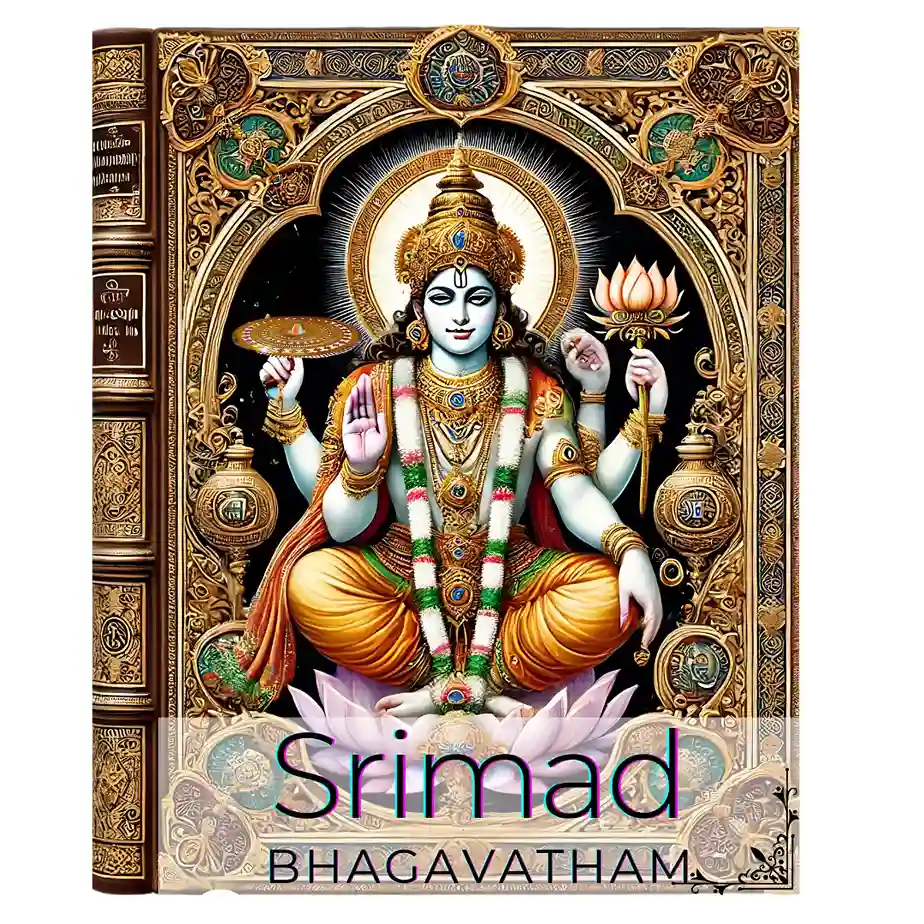
Although it is corporeally represented, the Samudra Manthan allegorically portrays ‘the esoteric journey of a sadhaka from ignorance to awareness’. In this article, I make a humble attempt to highlight the essence of this Pauranic event that is celebrated as a doorway to Immortality.
The underlying premise, characters, events, teachings, etc are not meant for casual reading. They rather cater to an ardent group of spiritual seekers who attempt to see beyond the literal expression of the event which may seem highly illustrative and less practically applicable.
However, on diving deep we shall see how the Samudra Manthan plots the various phases of spiritual awakening.
A Brief into the Main Characters of Samudra Manthan
The multiplicity of characters (like Devatas, Asuras, Danavas, Lord Narayana, Lord Brahma, Lord Shiva, etc) and objects (Mountain, Ocean, Snakes, Ambrosia), represent various aspects of human life and consciousness, which constitute both the desirable and undesirable.
Devatas and Asuras
Devatas represent goodness while Asuras represent modes of Passion and Ignorance. Although it is popularly believed that goodness is a prized quality, in the spiritual context it can lead to several pitfalls. This is because goodness like any other vice evolves from the Ego. Asuras symbolize our lower tendencies that propel us to pursue Adharmic activities for vested interests. They manifest in the form of lust, greed, anger, pride, etc, and blind us, preventing us from acknowledging our own frailties.
Devraj Indra
He is the king and leader of the Devatas and epitomises Sattva Guna. Although he is bestowed upon with riches and sovereignty over Swarga, our Pauranic stories highlight many instances wherein Indra slips from the path of Dharma and is vulnerable to the wrath of great sages like Gautama and Durvasa. Indra is a reflection of our self that aspires to comply with Dharma but is subjected by desire. In a sadhaka, the tendency to- enjoy the fruit of action, wanting praise, respect, fame, etc, and giving in to our desires is none other than Indra.
Asur-raj Bali
Bali Maharaj is an esteemed devotee of Lord Vishnu and Devi Lakshmi. However, he is surrounded by his associates who are averse from the Supreme Lord. In a sadhaka, the asuric vrittis should be subdued and adaptable to spiritual change. What does this mean? Let us draw a comparison between Bali Maharaj and his great grandfather Hiranyakashipu.
The latter had strong asuric vrittis that were rigid and unorthodox. The tendency to satiate the Ego without self-reflecting, not accepting the Lordship of Sriman Narayana, causing or becoming a hurdle on somebody’s spiritual path, etc are all attributes of Hiranyakashipu. These self-destructive Vrittis overpowered him and caused his gruesome death.
On the other hand, though Bali Maharaj annexed Swarga and worked towards the welfare of Asuras, he had a heightened sense of awareness and acceptance. He never let the Ego corrode his intelligence.
Asuric Vittis and Deva Vrittis are present in different magnitudes in every individual. However, the type of Asuric Vrittis conducive for spiritual growth is like that of King Bali. A sadhaka should aim at purifying their negative tendencies and become like the exalted King Bali, open to spiritual transformation as well as not identify with gratifying emotions.
The Lord did not instruct the Devatas to split into an army of two to begin the Samudra Manthan. The inclusion of Asuras for this unprecedented venture signifies that purification of the mind (indicated by Manthan or Churning) can succeed only if a sadhaka aims at transcending both so-called good (Deva Gunas) and bad (Asura Gunas), without having leniency towards one, to attain divine emotion (Bhakti) and intelligence (Jnana).
The Premise of Samudra Manthan (The Churning of the Milk Ocean)
Once, Sage Durvasa (a manifestation of Lord Shiva) was touring on Earth when he caught sight of Indra. Out of generosity and goodwill, the sage of great vows bequeathed the Divine Flower Wreath (that he acquired from Lord Vishnu as a token of affection) to the celestial king.
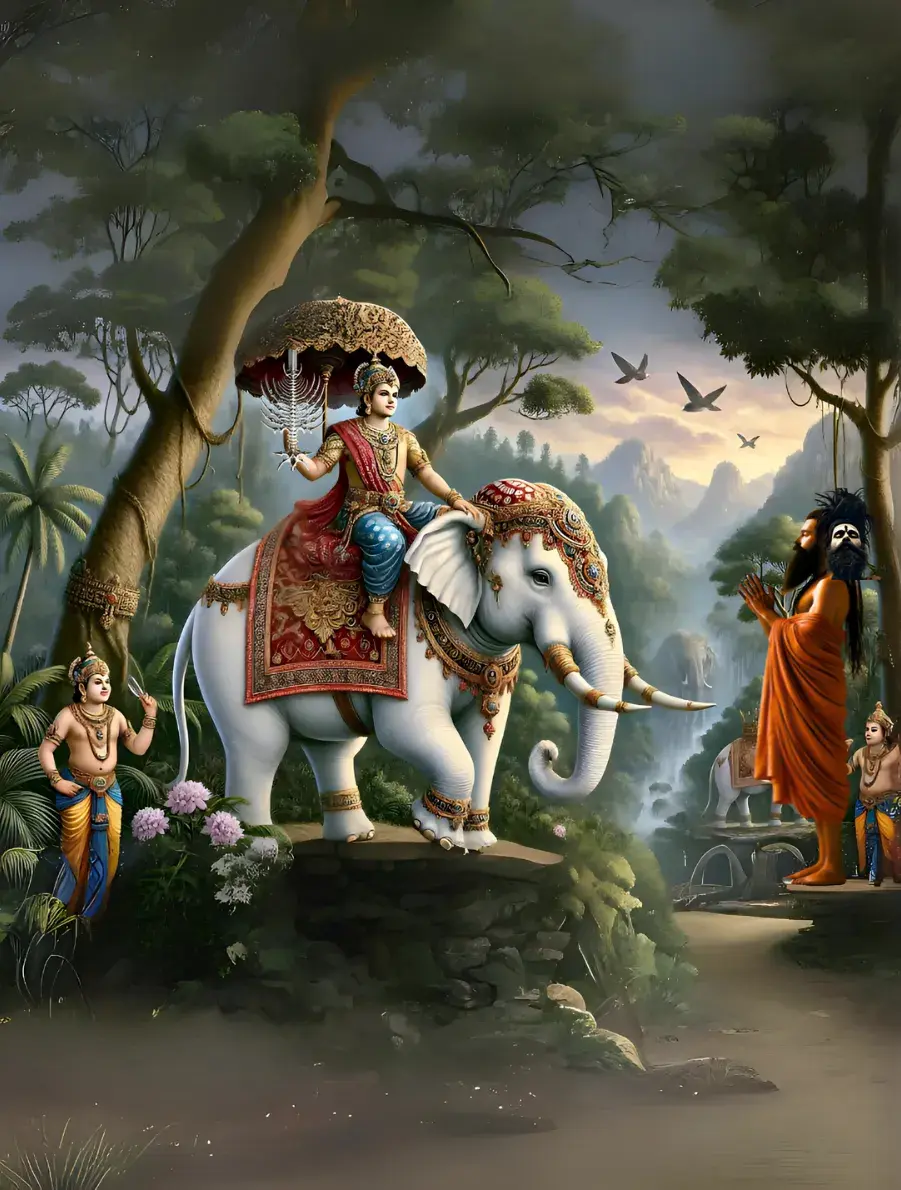
Blinded by vanity, Indra who was then mounted over Airavata, his celestial elephant, failed to observe customary codes of etiquettes. He neither paid homage to the great sage nor did he respectfully accept the wreath (which was an embodiment of the goddess of fortune according to the Vishnu Purana).
Indradev hurled the divine garland onto Airavata who was mesmerized by its intoxicating fragrance of the flowers. The celestial elephant stretched out its trunk and dashed the garland of flowers to the ground. Sage Durvasa who witnessed this, pronounced grave consequences that would befall the Devatas as the king offended the Goddess of Fortune. Realizing his misdeed, Indra pleaded for emancipation.
However, Sage Durvasa did not budge and instead let providence take its course of action.
Consequently, when a war ensued between the Devatas and Asuras, the Asuras who were favoured by Fortune and time, struck their enemies causing them to drop lifeless.
Sacred rituals were no longer performed by the denizens of earth, which resulted in Devatas losing their divine potencies, lustre, glow and becoming weaker day after day. The asuras overthrew Indra’s sovereignty and seized Swarga.
The Celestial gods discussed remedies to rectify the sin among themselves so that they could engage in a fair combat with their opponents. But, their endeavours were in vain.
Finally, they proceeded towards the abode of Sri Brahma for a solution.
The Premise: A Transformative Milestone in a Sadhaka’s Path
The premise of Samudra Manthan portrays a crucial turning point in a living entity’s life. A Jeeva turns towards Bhagawan only when calamities strike. Although endowed with exceptional qualities, Indra sinned against exalted sages primarily due to his unquestionable authority, a state of ultimate power.
Sage Durvasa served as a wake up call, compelling Indra to step down from his seat of Ego and acknowledge his weakness that stemmed from his heart. Indra is proficient in warfare, hailed as the king of gods, has immense fame, worshipped in rituals, etc. But such eminence does not translate as inner strength.
Similarly, when struck by adversity, even the most powerful person seeks a path towards inner fulfillment. Common man too enjoys and suffers like Indra, but at a metaphorical level.
Material accomplishments create a strong facade which may create a very good impression among people ensnared by materialism. However, when encountered by a highly evolved, spiritual being ( like in this case Sage Durvasa), the facade crumbles and completely exposes our inner frailties.
The Jeeva no longer remains fit for material pursuits due to the shattering of the facade, making him more vulnerable to other entities who are steeped in Egotism.
Just like how Devatas tried to rebound, a person may employ innumerable methods to revert to a state of material normalcy, but that never happens.
This is the time when a person stands on the crossroads of material and spiritual life.
Devatas Approach Sri Brahma Deva
Following their miserable defeat, the Devatas approached Sri Brahma. The latter being the creator of this tangible material universe, was concerned about the decline in religiosity among mankind and the rise of Asuras. A wave of compassion surged through Him on seeing the destitute Devatas.
Sri Brahma prayed to Lord Narayana with a heart full of reverence and implored Him to save the Devatas and restore sanctity.
All the Devatas, accompanied by Lord Brahma and Lord Shiva, ardently united in prayer. Sriman Narayana appeared in His full magnaminty, like a million suns shimmering simultaneously.
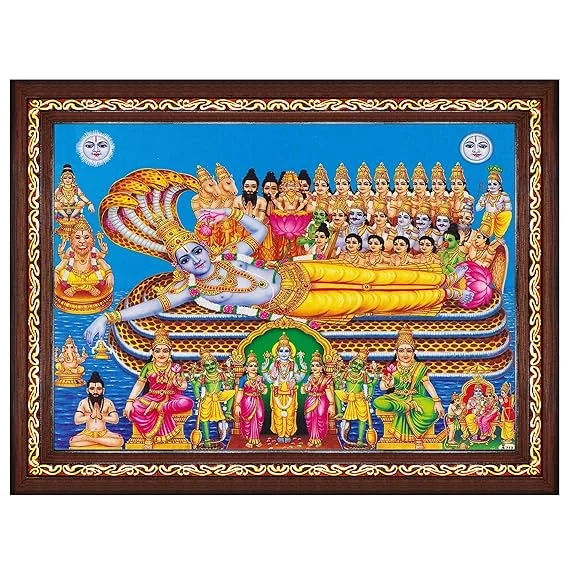
The radiance obscured the vision of the Devatas, isolating them from getting a glimpse of the divine form. However, Sriman Narayana, was conspicuous to His dear devotees, Sri Brahma and Lord Shiva.
As a remedy, Sri Hari instructed the Devatas to collaborate with the Asuras and initiate the churning of the ocean. Asuras were favoured by fortune and hence wielded immense strength which became crucial for the successful completion of the Samudra Manthan.
Lord Narayana assured that the elixir would solely pertain to the Devatas while the Asuras would inadvertently invest their energy towards the welfare of the Gods, without reaping the fruit.
To persuade the Asuras, the Devatas were asked to adopt diplomacy and secrecy by controlling their anger (when their opponents usurp desirable objects) , fear (of the poison Kalakuta), greed (for the alluring objects that rise from the ocean).
The Devatas, mindful of all they had been instructed, approached King Bali (the son of Virochana) who was the emperor of the Asuras. They tactfully proposed the Samudra Manthan, convincing the royal asura king and his associates to ultimately participate. They were promised an equal share in the elixir and other gifts that would emerge from the ocean.
7/8 Questions from Sanatana Dharma
The scores generated in this Quiz may or may not be absolute. There may be right or wrong answers to each Question. A percentage towards 100 indicates that you are more aligned to the overall subject matter.
Sri Brahma: The Guru Who Introduces One to Bhagawan
The Devatas had approached Sri Brahma who in turn introduced them to Lord Narayana. Here, Sri Brahma performed the role of a mediator (spiritual guide), bridging the gap between the Devatas (Jeevatma) and Bhagawan (Paramatma).
In Sanatana Dharma, the role of a guru is indispensable. A reflection of this truth is evident in the material planet. Parents entrust their children to teachers for molding them into better, competent individuals. Similarly, the Lord appoints the Guru to groom other conducive Jeevatmas.
In the spiritual context, when a sadhaka stands at the crossroads of the Mayic and Spiritual worlds, approaching a Guru, Sage or an Enlightened being is the wisest choice. This is the time of exploration and diving deeper into the quest of knowing Bhagawan.
The Devatas truly learnt the glories, nature and prowess of Bhagawan when Sri Brahma emphatically rendered hymns in praise of the Supreme Lord.
The party of Gods were helpless and thus completely relied on the intelligence of Sri Brahma. Similarly, it is crucial that a disciple surrenders to the Guru who is the ultimate well wisher of a sincere sadhaka.
One must absorb the Guru’s purity of prayer and benevolent disposition . As a Guru connects spiritually and fosters an irresistible compassion for his disciple the Lord shall eventually manifest. The Lord who was then unknown and unseen, shall make His presence felt gradually.
In the event, although Lord Narayana manifested in His most pristine form, the Devatas could only feel His presence and not perceive Him entirely. A sadhaka earns a special place in Bhagawan’s heart through the Guru’s grace, just as Sri Vibheeshana won Sri Ramachandra’s affection after being favored by Lord Hanuman.
Mandara Mountain: The Indomitable Will Power
The Devatas and Asuras formed a cordial alliance to acquire the elixir of immortality. As instructed, they hurled all kinds of medicinal herbs, plants, creepers into the ocean. Both the parties exerted their full might to dislodge the Mandara Mountain which was to serve as the churn dasher.
The weight of the mountain exhausted the Devas and Asuras, compelling them to drop it on their way towards the ocean. Owing to the massive weight of the mountain, multiple lives from both troops were crushed to death.
The Mandara Mountain represents Will Power. Not every human being qualifies for Sadhana as it fundamentally threatens one’s self-created identity or ‘image’ as we call it. It strikes our notions about the Self and World, which may temporarily lead to self doubt.
Therefore, to overcome this grave obstacle, which may hinder both material and spiritual growth, the sadhaka must possess the gem of Will Power—unyielding and steadfast like a rock. An Indomitable Will Power thwarts weaknesses and frailties, facilitating determination to tread the spiritual path. Thus,harnessing Will Power and being established in it is challenging but crucial.
In one instance of the Puranic legend, the Mandara Mountain was sinking on being churned, symbolizing how Will Power (Mandara) falters in the ocean of Samsara (material life). Maya, through deception, attempts to entice the sadhaka, misdirecting their resolve from the Supreme Lord toward worldly desires.
When a sadhaka succumbs, Will Power, (that was initially meant for liberation), begins fuelling ambition, thereby binding one to material existence, turning a tool of freedom into a source of bondage. A sadhaka has to diligently engage in churning of the ocean (mind) with resilience.
Thus, this scene serves as a disclaimer, alerting sadhakas from the potential pitfalls.
Sriman Narayana Uplifts the Mandara Mountain
The preparatory process of the Samudra Manthan was arduous and discouraging. The Mountain slipped from the grip of the troops. However, the Devatas became spirited on catching sight of Lord Narayana who appeared magnificent atop Sri Garuda and revived the Devatas who were crushed under the mountain.
The Gracious Lord effortlessly flung the mountain (as though it were a feather) on His Vahana, Garuda who in turn placed it in the ocean. Sri Garuda withdrew, making way for the Serpent King Vasuki who was made the churning cord.
Vasuki: The Everlasting Symbol of Faith and Surrender
Vasuki is the King of Serpents and possesses unrivalled strength. He too was promised a share in the ambrosia if He supported the Devatas in churning the ocean. However, participating in the act could also lead to fatal consequences. The pain one would experience on being inconsiderably pulled from either side while also being tied to a rugged mountain could have discouraged any ordinary mortal.
However, Vasuki agreed to participate as He was assured that the Lord would protect Him throughout the Manthan. Thus, Vasuki became a perfect recipient of Bhagawan’s grace. He agreed to risk his life and withstood the effects of the poison when it sprung from the ocean. Vasuki’s selflessness, faith and sheer surrender won over Lord Shiva who made His very neck, his dwelling place.
Lord Shiva graced the king of serpents by making Him an integral part of His identity, as an ornament around His neck. Such a reward is unparalleled and can be bestowed upon only the most fortunate souls.
A cohesive study of Mandara and Vasuki shall reveal that Will Power needs to be tied down by faith. Unchecked Will Power (an evolute of Rajas) boosts the Self. However, when Faith (Shuddha Sattva) wraps itself around it, the mode of passion gets curtailed, thereby purifying oneself.
Overcoming Reptilian Tendencies
Vasuki belonged to the class of reptiles which is reflective of primitive tendencies (like territoriality, instinctual responses to situations, etc), prevalent in human beings.
The material world is a perverted reflection of the spiritual world. Negative tendencies do not befit a human being. However, when these negative tendencies are surrendered at the Lotus feet of Bhagawan, it becomes an ornament, to adorn Him. Only the Lord can heartily accept our inner contamination and purify it.
A sincere sadhaka is the one who unhesitatingly acknowledges one’s shortcomings (on being highlighted by the Guru) and surrenders them unto the Guru who in turn adorns the Lord with it. This is indeed an offering, rare to find and hence very precious.
Commencing the Churning of the Ocean
Sri Vishnu walked towards the mouth of Vasuki and held it in His Lotus palms. This gesture irked the Asuras. They refused to hold the tail of the serpent which is considered inferior and inauspicious. The Asuras reacted as intended and the Lord gave in to their foolish demand. Finally, the Devatas aligned on the other shore, clasping the tail of Vasuki while the Asuras held the head.
As the churning began, the momentum of the Mandara Mountain drove it deep into the ocean, causing it to sink. The Asuras and Devatas failed to keep it afloat. Many minor challenges transpired and like always, Sriman Narayana extended to resolve them. Having assumed the splendid incarnation of Kurma (the Divine Tortoise).
He dived to the bed of the ocean. Carrying on his back- the Mandara mountain and sitting Himself on its peak, in his 1000 handed form, Sriman Narayana prevented the mountain from both sinking and tossing in air.
The dejected Devatas and Asuras were now delighted. The Lord entered the Gods in the mode of Goodness (Sattva) and in the Demons in the mode of Passion (Rajas) to facilitate motion. The gracious Lord assumed the form of Suspended Consciousness and entered Vasuki. This spared him from the excruciating pain that he would have otherwise suffered while being dragged across Mount Mandara’s rough surface.
Symbolism of the Ocean and the Omnipresence of Bhagawan
The churning of the ocean represents a sustained adherence to spiritual practice as well as purification of the mind. This episode highlights that without the Grace of Bhagawan, no sadhana can ever commence. However, it is crucial that a Sadhaka expresses fervent desire to pursue spiritual goals. This becomes the yardstick to gauge one’s eligibility.
Although the final decision maker is Bhagawan alone, a sadhaka can urge the Lord to reciprocate via the Guru who is in close proximity with Him. When done so, all obstacles gradually subside.
Following instructions of the Guru and rendering seva unto Him shall gain one Bhagawan’s favor. The Sadhaka must exercise Free Will to do so. Later, the Lord shall infuse Rajas (to initiate action) and Sattva (to adhere to spiritual rules and activities) in the sadhaka. The union of the two Gunas, projected from the Lord, brings stability in the life of a sadhaka and ensures continuity in sadhana.
Lord Shiva Consumes the Dreaded Kalakuta Poison
The cousins now began churning the ocean with renewed vigor. Vasuki’s mouth that was facing the Asuras began emitting flames of fire and other gases causing them to lose their splendor. They looked parched due to the lethal emissions. The breath of Vasuki obscured the vibrance of the Devatas making them appear pale and weary.
Instructed by Sriman Narayana, the clouds poured and the gust of breeze cooled them . The churning proceeded for long but when nothing emerged Sriman Narayana participated.
As the churning proceeds, the currents of the ocean transform into a vortex, consuming within itself many aquatic lifeforms (especially crocodiles, alligators, snakes, fish, etc). Soon, the atmosphere turned grim and from the heart of the milk ocean gushed out the most dreaded poison Kalakuta.
The poison rapidly spewed in all corners, endangering all life forms. The leaders approached Lord Shiva who eternally dwells along with Devi Bhavani on Mount Kailash. To safeguard creation, the Lord sought approval from His consort Bhavani and partook of the poison.
The malefic effects of the poison discolored the throat of Lord Shiva. Other creatures like serpents, dogs, scorpions, insects, drank the poison that dropped from the palms of Lord Shiva while He was consuming it.
Deeksha Guru: A Personification of Lord Shiva
Churning of the Ocean was primarily initiated to receive the elixir. However, the Kalakuta poison sprung up first. Why did such an undesirable object appear first? Elixir benedicts immortality. The true meaning of immortality is ultimate release from mortal existence or Moksha.
Kalakuta is the most lethal poison. It symbolically represents a conglomeration of Agami and Sanchita Karmas that may hinder a sadhaka from pursuing Moksha. It manifests in the form of unconducive relatives, spouse, circumstances, boredom, etc.
Emergence of Kalakut also relates to Surfacing of toxic behaviour. Instincts like Lust, Anger, Greed, Pride, Envy, Attachment, Fear, Animosity, Selfishness, etc represent Kalkut. These traits are lodged at the core of the mind, in every living entity.
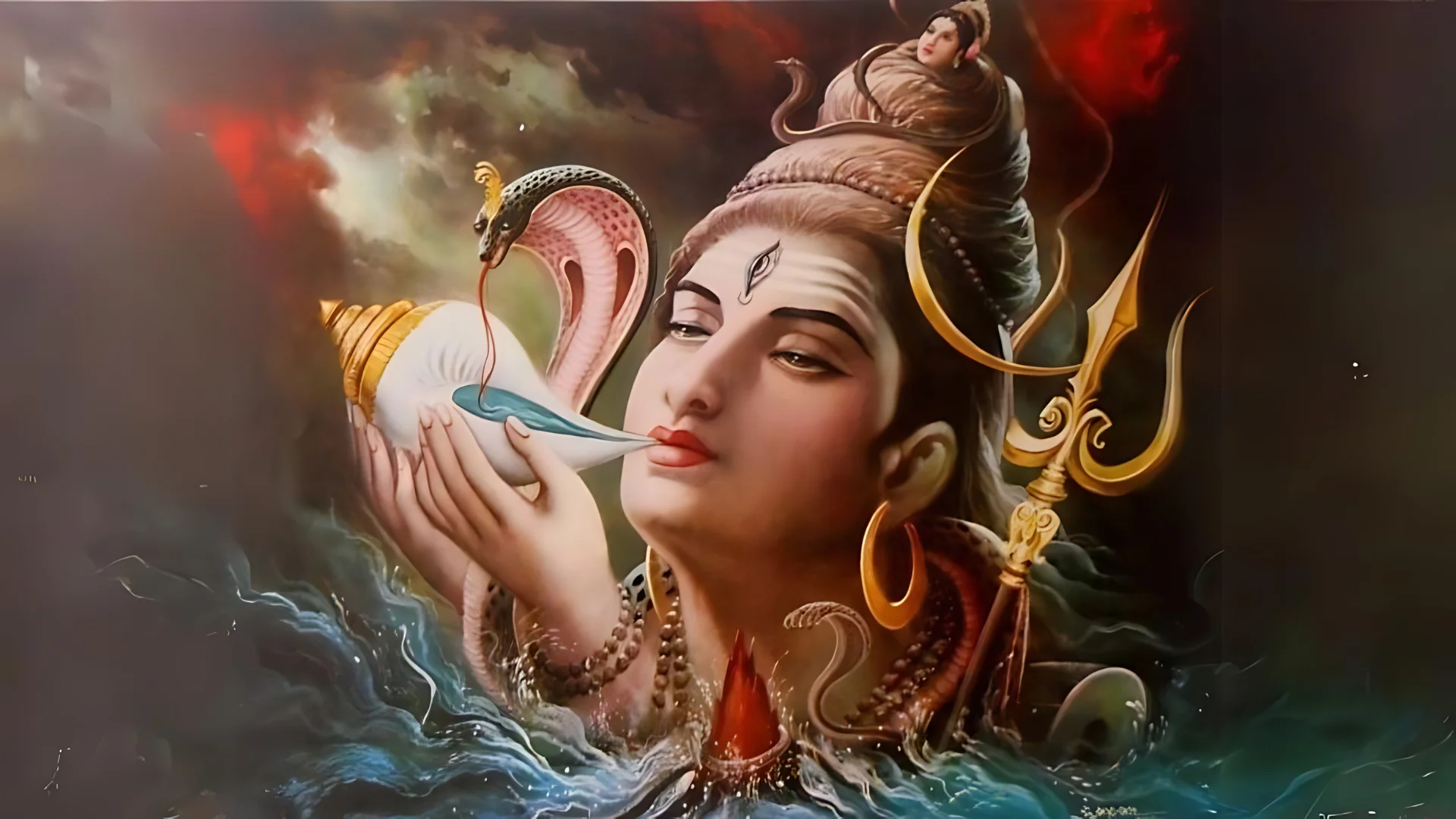
The most important step of Samudra Manthan lies in burrowing our consciousness, to rectify our instinctive traits. The effervescence of the poison springs forth from the mind and thus cannot be consumed by the sadhaka. It has to erupt and evacuate from the system of the sadhaka. Thus, a sadhaka must offer it to a competent spiritual master, represented by Lord Shiva.
Difference between Shiksha and Diksha Guru
Lord Shiva represents the Diksha Guru while Lord Brahma represents the Shiksha Guru (as we discussed earlier). In Shishka there is the necessity to exercise Free Will, on part of the Sadhaka.
However, upon receiving Diksha the Guru formally takes accountability of the Shishya. Diksha is the process wherein the Guru willingly becomes the shield, partly withstanding the lashes of karma on himself while safeguarding his cherished disciples similar to how Lord Shiva consumed the poison to protect the world.

The Guru makes his disciples aware of their inner toxicity through Shiksha and ultimately consumes the poison thereby contributing to their spiritual growth. Major load of Karma gets transferred to the Guru on account of his innate compassionate being (an inseparable quality of Lord Shiva).
Thus, the Samudra Manthan narrates a multifaceted experience of a spiritual seeker. It covers the internal and external battles of the seeker, with Guru being the Guardian, Bhagawan the Sustainer and Moksha the Ultimate goal that he strives for.
Please Like the Blog and Share it for Maximum Reach

